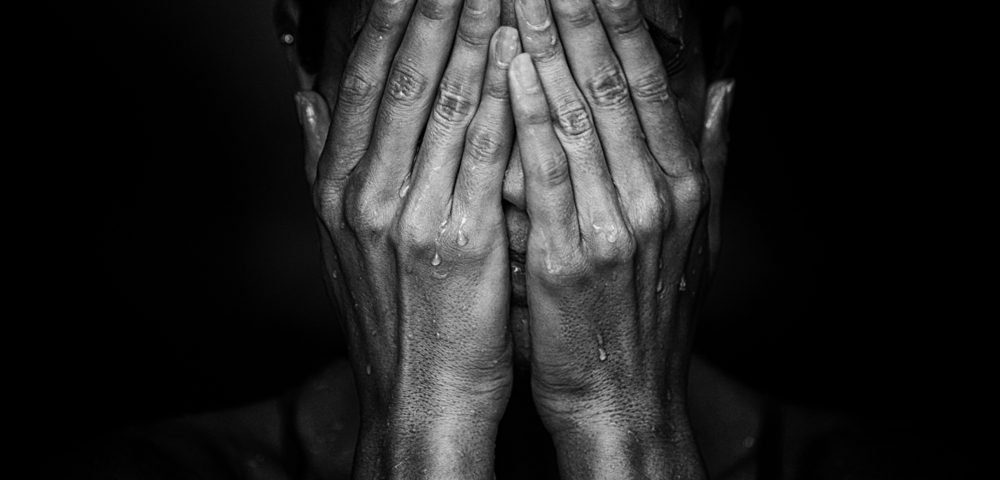The photographs are unflinching, abject in their rawness. Taken by Georgie Wileman, they are images of life with endometriosis, an often misdiagnosed, misunderstood and debilitating reproductive disease that affects some 200 million women globally.
The photos comprise Wileman’s nearly completed project, This Is Endometriosis. In one, a woman is curled in her bed, her face in a pillow, her right arm clutching her abdomen. Another is of a woman’s stomach, pockmarked from surgery or other treatment.
There’s a shot of a woman on a shower floor, dripping with water and maybe despair. And another of a hand-written ledger of daily medicines. Wileman hopes to soon add more photos of people of color.
Many are self-portraits. After all, the project is borne of Wileman’s own disease journey. Her intent was to present an honest glimpse into the ravages of endometriosis, physical and otherwise. When she was first diagnosed a few years ago at age 26 — 13 years after she first fell ill — she didn’t even recognize descriptions she read of her illness.
“They’re words that do not come close to the impact on my life, one of heat-pad burns and morphine, wheelchairs and walking sticks,” she was quoted as saying in a recent interview with the British Journal of Photography.
Stirred to counter what she considers woefully misleading misrepresentations, Wileman began documenting her own experience. One such photo is of her stomach, the surface an assemblage of scars conjoined by pen in a misshapen oval, each wound notated with dates of procedures. Titled “2014-2017,” the image was first displayed at the National Portrait Gallery in London in 2017. Soon, she began including fellow patients.
In her This Is Endometriosis artist’s statement, Wileman, a photographer by trade, describes her work as a “documentation of lives lived with endometriosis, a widely misunderstood disease that scars and destroys internal organs, causing extreme pain and in many cases irreparable damage.”
“I have documented the physical and emotional toll of of eight people fighting the disease, including myself, our scars a chronology of misdiagnoses, unnecessary procedures and, ultimately, the many failings of our healthcare system,” she added.
As it is, the London-born, Brooklyn, N.Y.-residing photographer has had a handful of surgeries, and continues to struggle emotionally. Among her regular experiences are labor-like contractions, worries that physicians don’t buy the enormity of her pain, regular ultrasounds, a distended stomach, and home and wheelchair confinement.
Endometriosis occurs when womb cells grow outside the uterus. Classic symptoms include severe pain, inflammation, bleeding, cramping, and sometimes scar tissue. It’s also a leading cause of infertility.
Still, many people, if they’ve even heard of it, think the disease basically amounts to painful periods, said Wileman, who also decries the seven to 10 years on average it takes for a proper diagnosis. There are other misperceptions as well.
“Endometriosis is thought to only affect childless white women in their 30’s,” she said in her project statement. “This misperception stems from the fact that many sufferers outside of this demographic cannot afford to pursue a long and expensive diagnosis.”
A key problem with diagnosis is that pelvic pain associated with the disease is typically indistinguishable from other causes, including menstruation, urinary tract infections, pelvic inflammatory disease, and irritable bowel syndrome.
To spread awareness and increase disease understanding, and to provide a way for others to share experiences and to know they’re not alone, Wileman this year began a social media campaign called #thisisendometriosis. So far on Instagram, the effort has garnered more than 5,000 posts. Most of them are photos — surgery scars abound — and some are personal stories.
Like Wileman’s project, all are unvarnished.
”It’s hard to put into words how cathartic it is not to be on your own in this,” she states in the British Journal of Photography article. “Seeing an accurate representation of yourself is so crucial in finding hope.”

